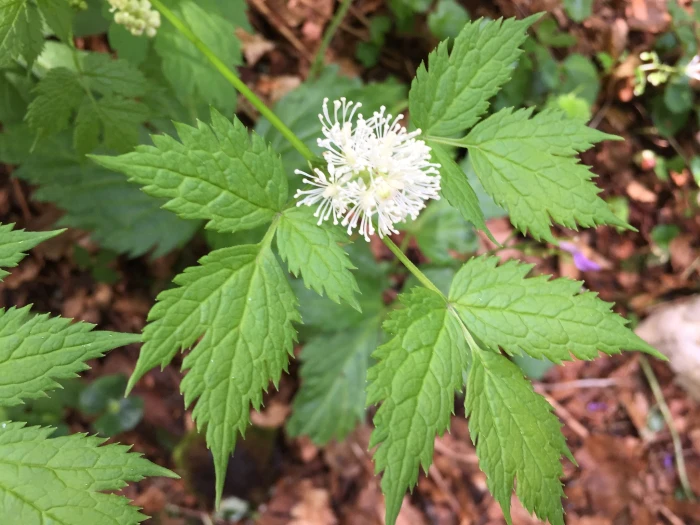Baneberry
(Actaea spicata)
Baneberry (Actaea spicata)
/
/

Jason Grant
CC BY 4.0
Image By:
Jason Grant
Recorded By:
Copyright:
CC BY 4.0
Copyright Notice:
Photo by: Jason Grant | License Type: CC BY 4.0 | License URL: http://creativecommons.org/licenses/by/4.0/ | Rights Holder: Jason Grant | Publisher: iNaturalist | Date Created: 2017-06-02T11:07:28-07:00 |

















Estimated Native Range
Climate Requirements for Cutler Bay, Florida
| This Plant | Your Site | Plant Suitability for Your Location | ||
|---|---|---|---|---|
| • Precipitation | 10" - 139" | 57" | Aquatic | Aquatic |
| • High Temp. | 44°F - 96°F | 90°F | Your summer temperatures are normal for this plant. | Excellent |
| • Low Temp. | -19°F - 41°F | 59°F | OK, but your winter temperatures are warmer than normal for this plant | OK |
This plant may not grow well at your location - your precipitation is too high.
Summary
Actaea spicata, commonly known as baneberry, is an herbaceous perennial native to the understory of deciduous forests, often on calcareous (limestone) soils, across Europe, western Siberia, and northern Iran. It typically grows to a height of up to 26 inches (66 centimeters) and is known for its compound leaves and small, creamy white flowers that bloom in spring to early summer. The flowers are arranged in an erect, elongated cluster called a raceme and are followed by glossy black berries, which are highly toxic if ingested. The plant’s overall appearance is delicate and fern-like, adding a touch of elegance to shaded garden areas.
Baneberry is valued for its ornamental foliage and flowers, which can add interest to woodland gardens, shaded borders, or naturalized areas. It prefers moist, well-drained soils rich in organic matter and thrives in part shade to full shade conditions. While it is not commonly used in culinary or medicinal applications due to its toxicity, baneberry has been utilized in homeopathic medicine for treating arthritis and joint pain. Gardeners should handle this plant with care and ensure it is not planted where children or pets might consume the berries.CC BY-SA 4.0
Baneberry is valued for its ornamental foliage and flowers, which can add interest to woodland gardens, shaded borders, or naturalized areas. It prefers moist, well-drained soils rich in organic matter and thrives in part shade to full shade conditions. While it is not commonly used in culinary or medicinal applications due to its toxicity, baneberry has been utilized in homeopathic medicine for treating arthritis and joint pain. Gardeners should handle this plant with care and ensure it is not planted where children or pets might consume the berries.CC BY-SA 4.0
Plant Description
- Plant Type: Herb
- Height: 1-1.3 feet
- Width: 0.25-1.75 feet
- Growth Rate: Slow
- Flower Color: White
- Flowering Season: Summer
- Leaf Retention: Deciduous
Growth Requirements
- Sun: Part Shade, Full Shade
- Water: Medium
- Drainage: Medium
Common Uses
Border Plant, Butterfly Garden, Deer Resistant, Low Maintenance, Rabbit Resistant
Natural Habitat
Understory of deciduous forests, often on calcareous soils
Other Names
Common Names: Bugbane, Herb Christopher
Scientific Names: Actaea spicata, Actaea christophoriana, Actaea corymbosa, Actaea densiflora, Actaea nigra, Actaea racemosa, Actaea spicata f. colorata, Actaea spicata f. melanocarpa, Actaea spicata subsp. nigra
GBIF Accepted Name: Actaea spicata